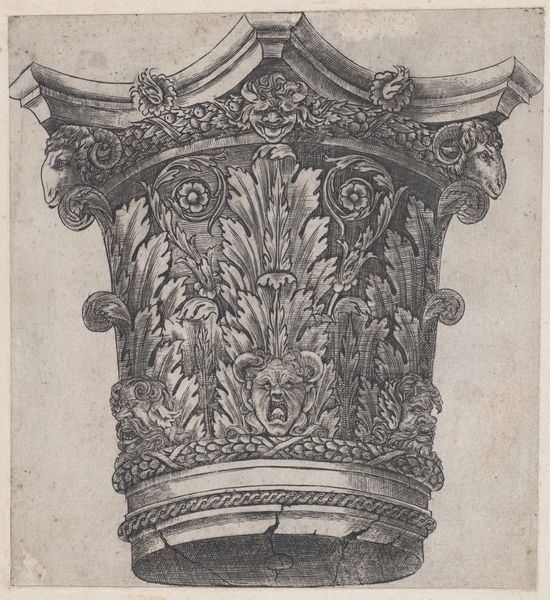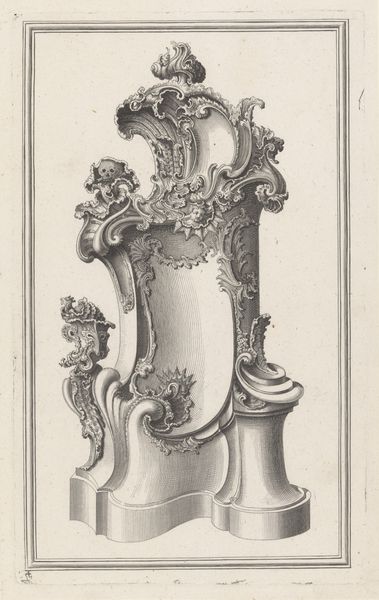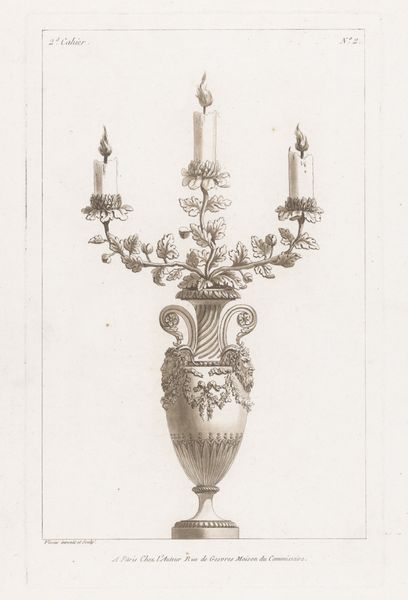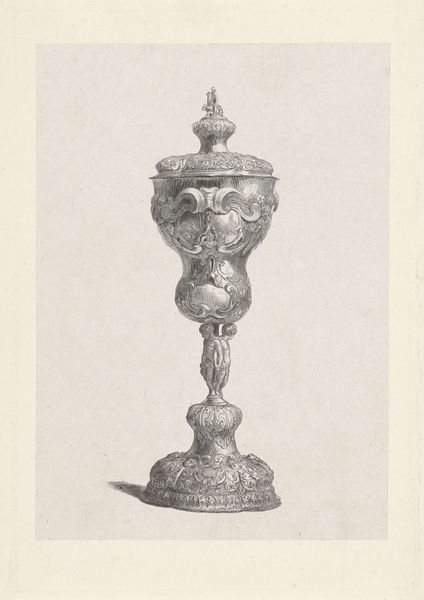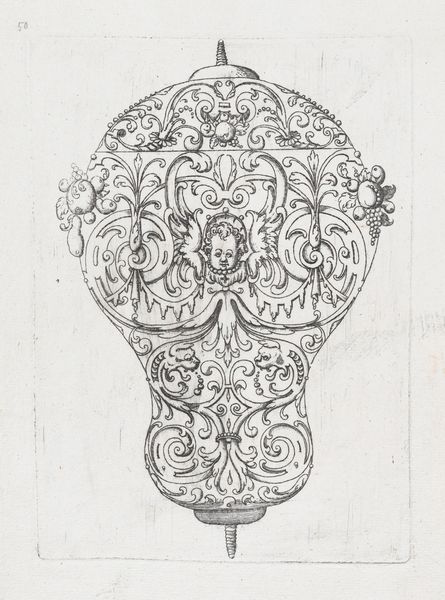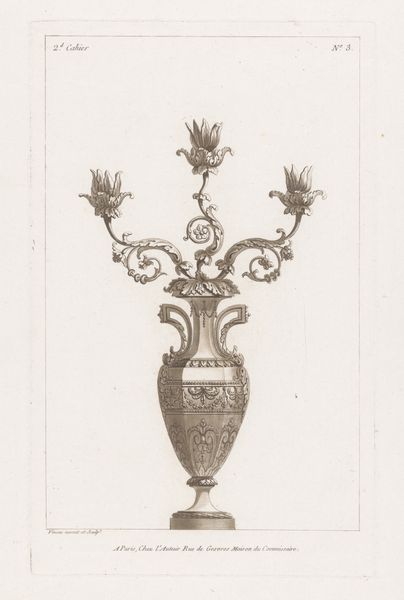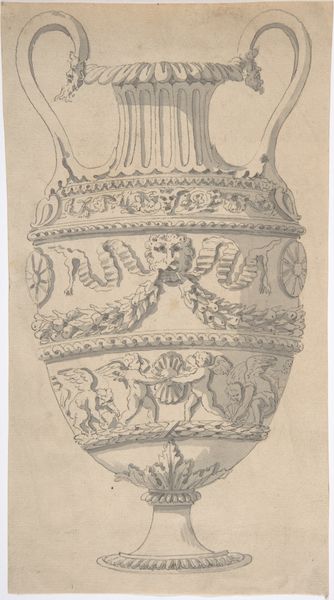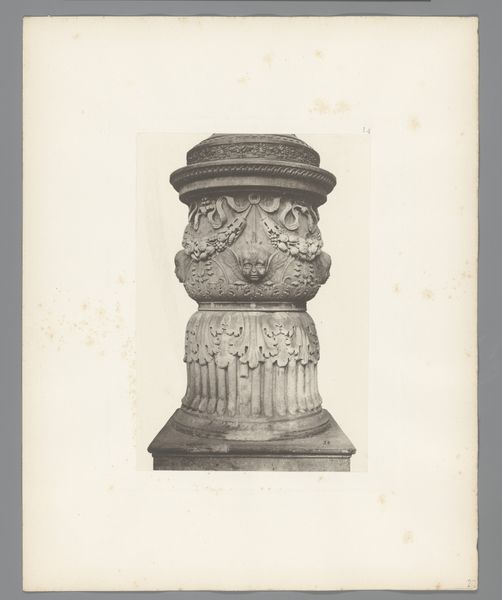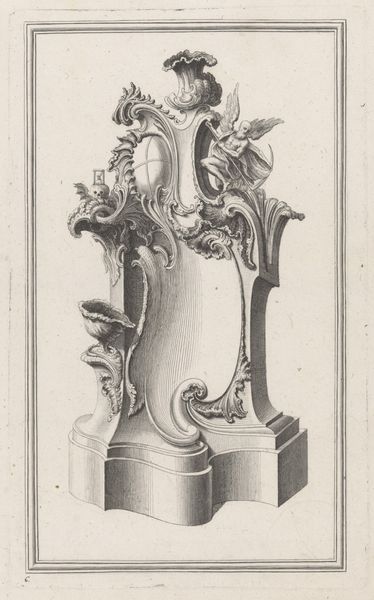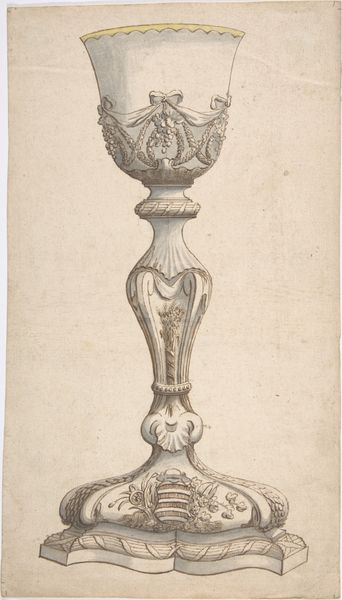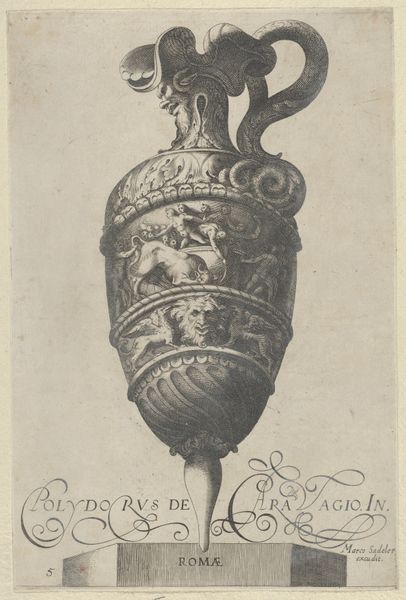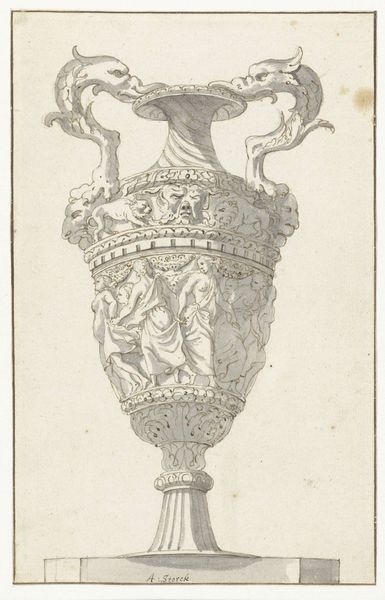
drawing, pencil
#
drawing
#
classicism
#
pencil
#
academic-art
Dimensions: 12 x 7-3/8 in
Copyright: Public Domain
Editor: Here we have an exquisitely detailed pencil drawing entitled "Vase," created sometime between 1800 and 1900 by an anonymous artist. It is currently held at the Metropolitan Museum of Art. What strikes me immediately is the incredible precision. What stands out to you when you look at it? Curator: I'm particularly drawn to the process of its making. We see the intense labor involved in rendering such a detailed object in pencil. Consider the materiality: graphite meticulously applied to paper, simulating a presumably more monumental marble vase. Isn't it intriguing that someone invested so much time in recreating a potential object of elite consumption using such humble means? Editor: It is interesting. You’re making me think about what a drawing like this might have been *for.* Would it be a preparatory sketch? Curator: Perhaps. Or consider the social context. The academic art style, with its roots in Classicism, held considerable sway during that era. But here, a "lesser" medium -- pencil -- reproduces what could become sculpture or functional product. How might that tension—the drawing aspiring to "high art" but remaining on paper—tell us about artistic hierarchies and aspirations at the time? It suggests a challenging of boundaries, doesn’t it? Editor: Absolutely. I hadn't thought about the medium itself making a statement. Curator: The drawing becomes an artifact, representing labor, the pursuit of Classicism through academic art, and its potential, postponed transformation into some luxury object, always remaining as just graphite on paper. What a wonderful and potentially subversive transformation! Editor: I appreciate you pointing out the social and material context. I am leaving here thinking of more than just form, but of the process behind its creation and the layers of meaning the materials bring. Curator: Precisely. The materiality illuminates not just the "what" but also the "how" and "why" of its creation.
Comments
No comments
Be the first to comment and join the conversation on the ultimate creative platform.
